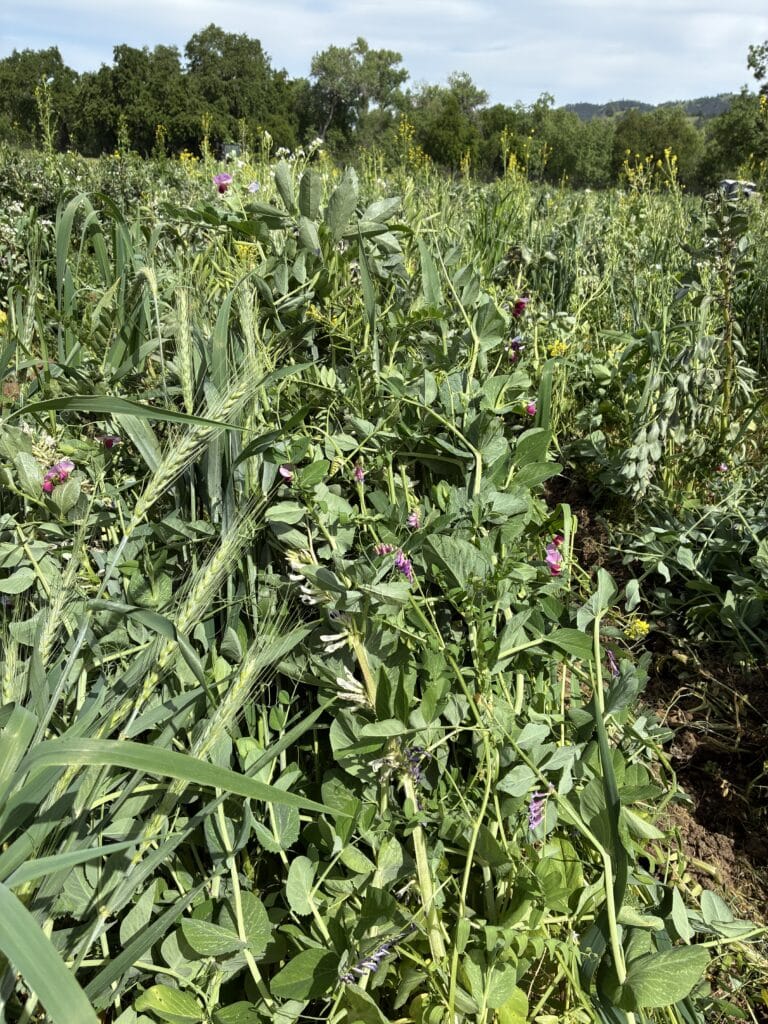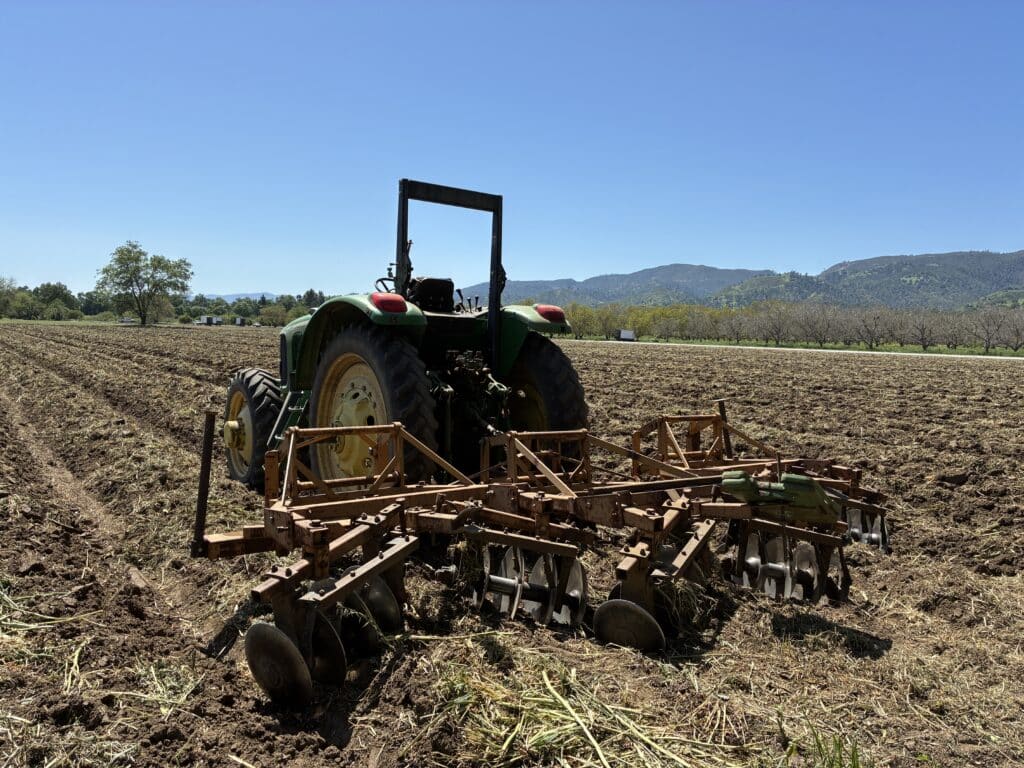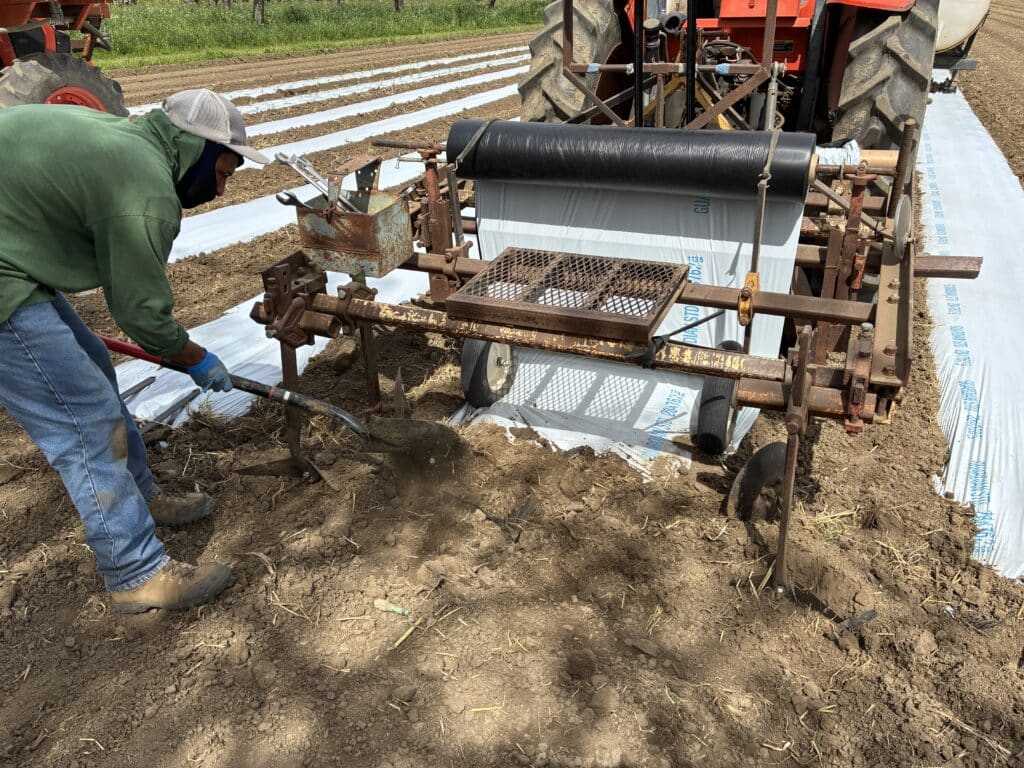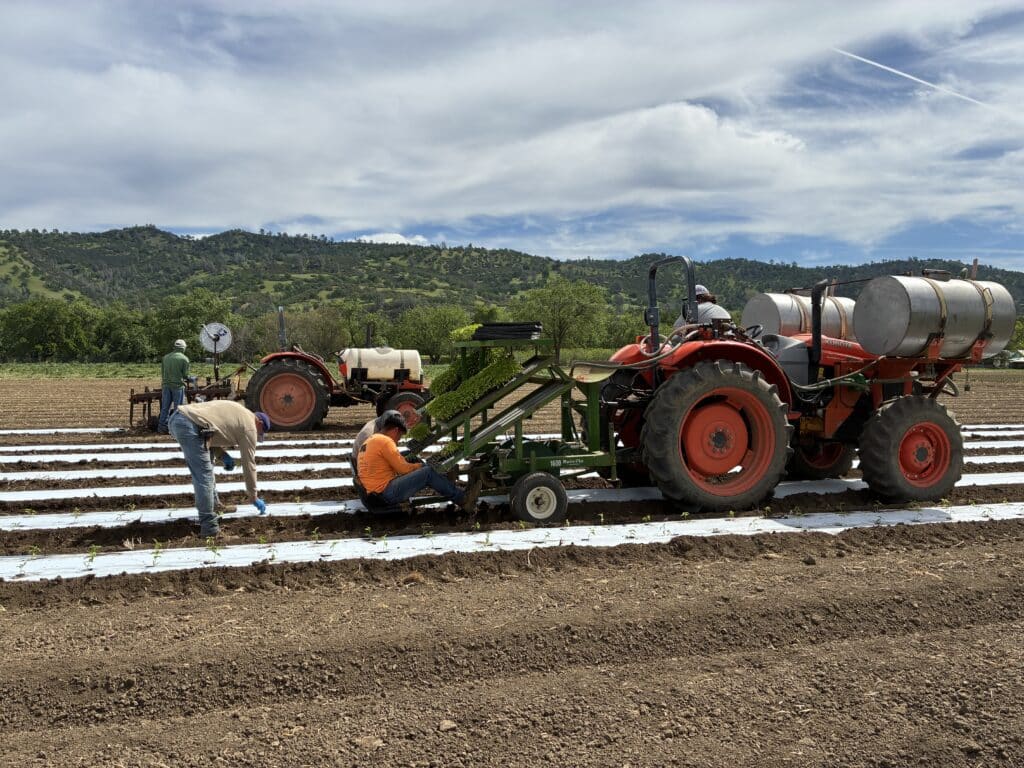Spring is a really lovely time of year here. By mid-April, everything is green, there are flowers everywhere (in our fields and wildflowers in the hills and borders of the farm), and things are growing so fast. It seems like in the course of a day, you can see noticeable plant growth!
Even faster than the plant growth is the dramatic transition from lush fields of cover crops, to something we can plant into. In fall, we planted a mix of legumes (vetch, peas, bell beans), mustards, radish, and grasses (rye and wheat), each chosen to provide a different benefit to the soil. You can read more about cover crops and why we use them here.
The first step is to mow all that biomass turning it from this:

Into this:

Then there’s more tractor work involved, plus time, for that material to break down and for the ground to be suitable for planting. After mowing on Friday, the next step was to use a hiller disc. The hills act like mini compost piles that can start to break down all that biomass.

The goal when thinking about our soil is to feed the organisms in the soil and minimize disturbances to that complex ecosystem. Fun facts: a single teaspoon of soil can contain billions of bacteria, miles of fungal filaments, and other life forms. While alive, they perform key roles in supporting plant health and up to 50% of soil organic matter can be made up of dead microorganisms, one of the largest stocks of carbon on the planet. Their presence in our soil is crucial!
However, we also need to balance production needs. After the disc, we sometimes will use another tractor implement that cuts the below-ground growth, aiding its decomposition. Lastly, we use a bed shaper to create a good environment for planting or transplanting. This process of turning around a field takes at least ten days, depending on temperature and weather.
For some crops, like the peppers, there’s an extra step required before we can plant! For these crops we lay down a (plastic) mulch to help with weed control and water retention. When we’re transplanting into a mulch, we use a specific transplanter that will punch holes in the mulch, opening up a space for the plants.

On Friday we had three tractors going at once on a field: Amon was mowing, Rye was laying mulch and drip tape, and Ellis was driving a transplanting team.

We’ve also planted our first set of tomatoes, eggplant, many of the summer cucurbits (melons, summer squash, cucumbers). Summer crops will be here before we know it!
Elaine Swiedler, CSA Manager
